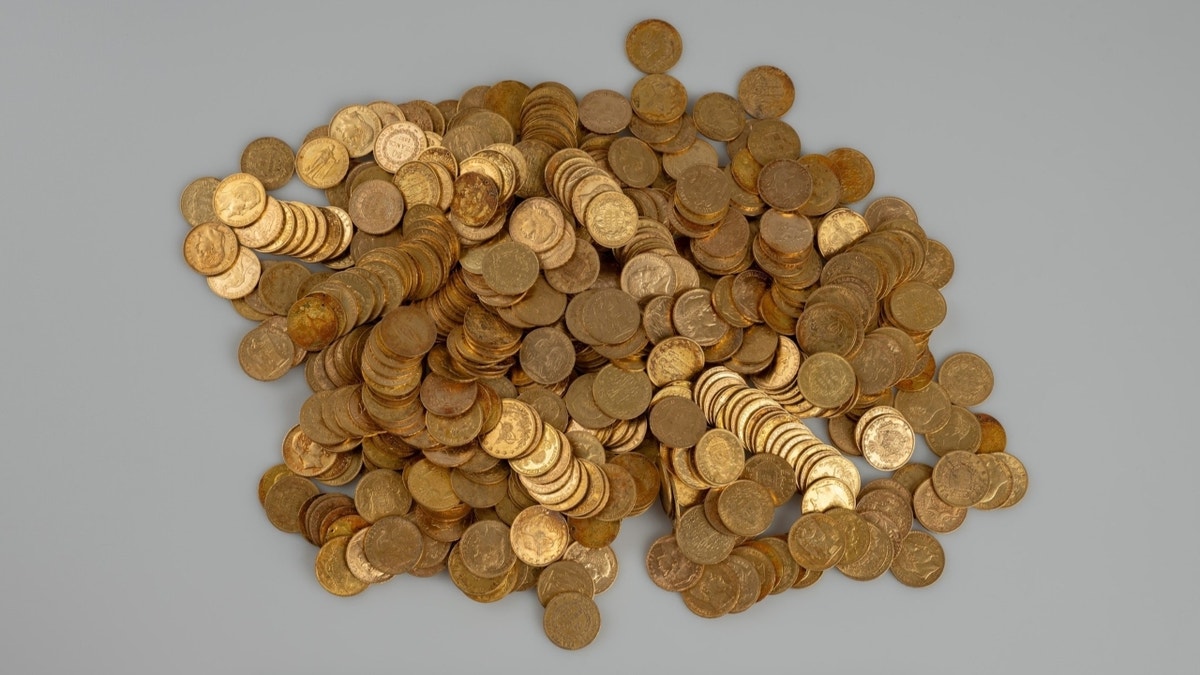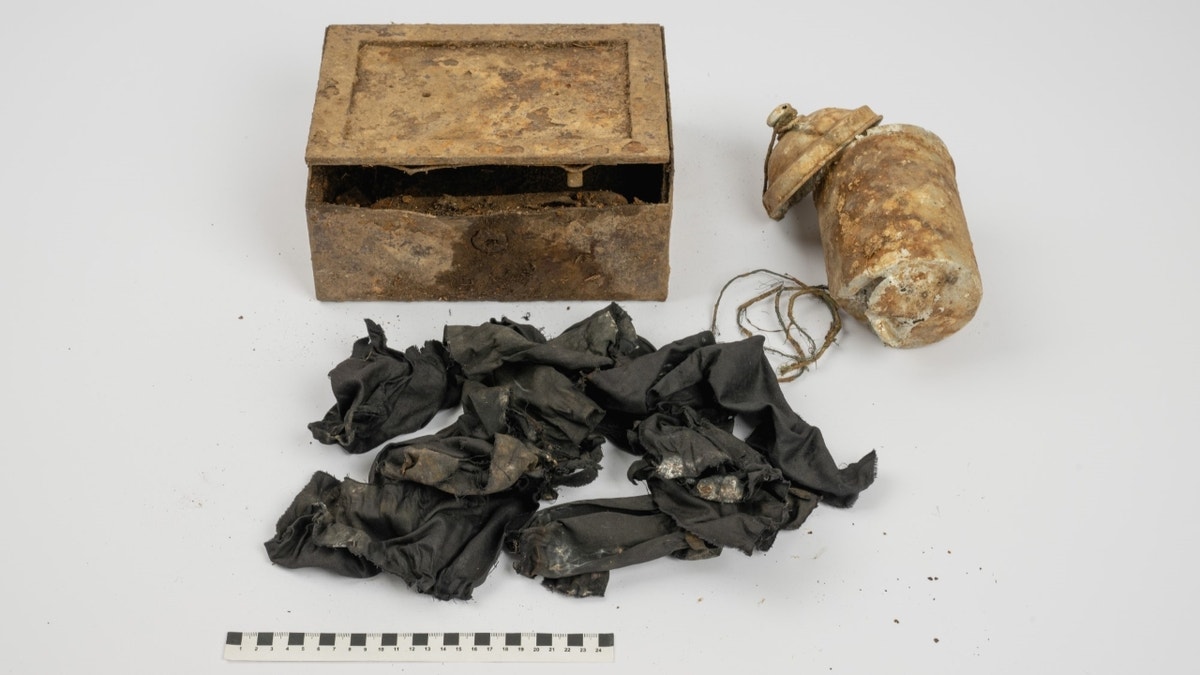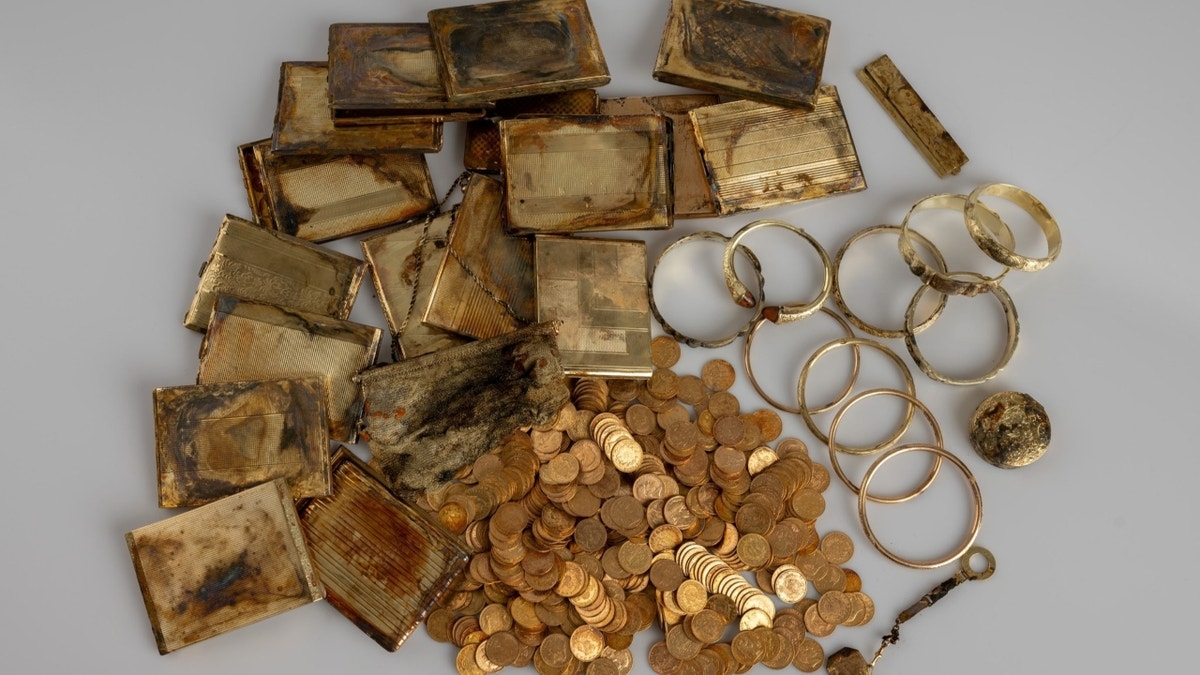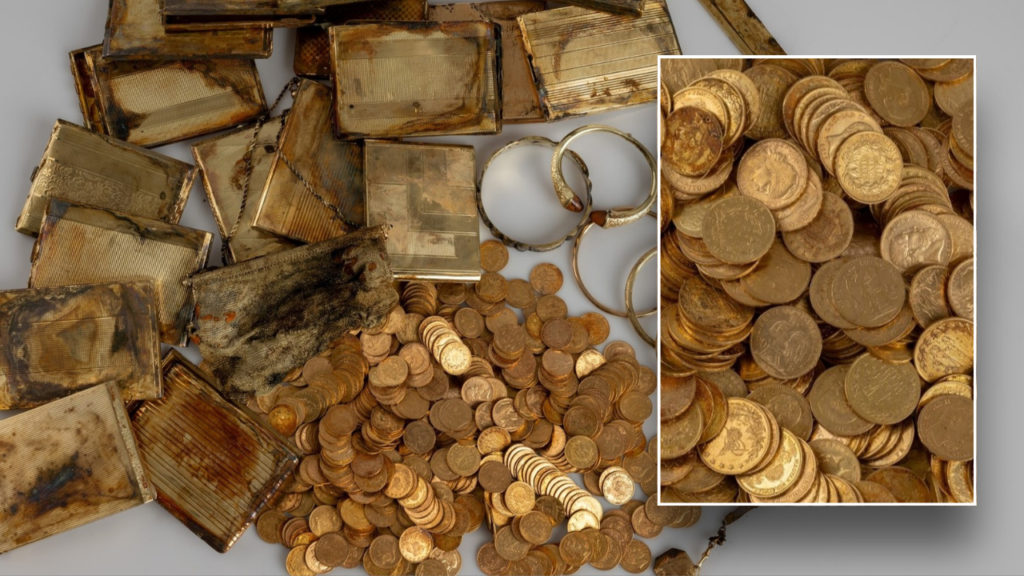A cache of gold items and other pieces of treasure came to light recently – and officials are still perplexed by the trove’s origin.
In a statement shared with Fox News Digital, the Museum of East Bohemia in Hradec Králové, Czech Republic, said that a “depot of gold coins, jewelry and tobacco boxes” had been found.
Weighing a hefty 15 pounds, the cache was found by two hikers who handed the treasure over to the museum in February.
HISTORIC MARYLAND CHURCH OPENS DOORS TO VISITORS 320 YEARS AFTER CLOSING DOWN
“[T]wo finders discovered two boxes in an artificially created stone wall on the edge of a now non-existent field overgrown with forest during a tourist walk on the southwestern slope of Zvičina Hill,” the museum said in a press release translated from Czech to English.
Pictures show the stunning finds consisting of various gold rings, bars and coins, though the gold had varnished with age.
In total, 598 coins were found. The container holding the gold items was “divided into 11 columns and wrapped in black fabric,” according to the museum.
“In a metal box found about a meter away, objects made of yellow metal were stored — 16 tobacco boxes, 10 bracelets, a bag made of fine wire mesh, a comb, a chain with a key, and a powder box,” the museum also said.
“This find is notable for the unusually large weight of precious metal.”
In a statement, Museum of East Bohemia archaeologist Miroslav Novák called the discovery a “unique find.”
GARDEN OF EDEN’S TRUE LOCATION ‘CAN ONLY BE’ AT UNUSUAL TOURIST LANDMARK, NEW ARGUMENT CLAIMS
“Storing valuable objects in the ground as treasures, known as depots, has been common practice since prehistoric times,” the expert said.
Novák added, “Initially, religious motives were more common, but later it was property stored during uncertain times with the intention of retrieving it later. This find is notable for the unusually large weight of precious metal.”

What makes the discovery so unusual is how relatively young it is.
The earliest coins date to 1808. Museum of East Bohemia coin specialist Vojtěch Brádle said that the treasure had been buried “for just over 100 years.”
For more Lifestyle articles, visit foxnews.com/lifestyle
“Based on the dates stamped on them, the coins range from 1808 to 1915,” the numismatist said. “However, the year 1915 is not decisive for determining when the depot was placed there.”
He noted that the coins must have been placed after World War I, based on certain marks.

“These marks were stamped on coins in the territory of former Yugoslavia during the 1920s and 1930s,” Brádle noted.
“Within the context of domestic finds, this collection is very specific, as most of it consists of coins of French origin, and besides Austrian-Hungarian coins, it also includes Belgian and Ottoman coins.”
He added, “Conversely, German and Czechoslovak coins are entirely absent.”

The museum concluded its announcement by noting the opportunities that the relatively recent treasure trove presents.
“[It] presents much broader, albeit more complex, possibilities for studying historical archival documents,” the statement read.
Read the full article here







